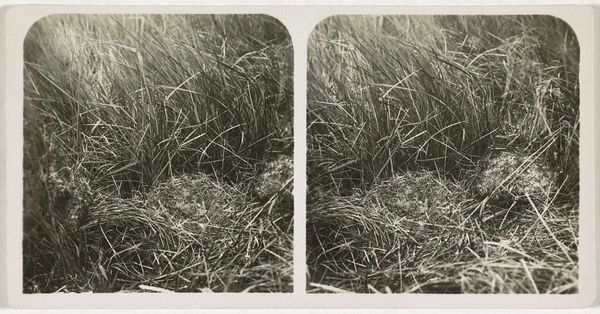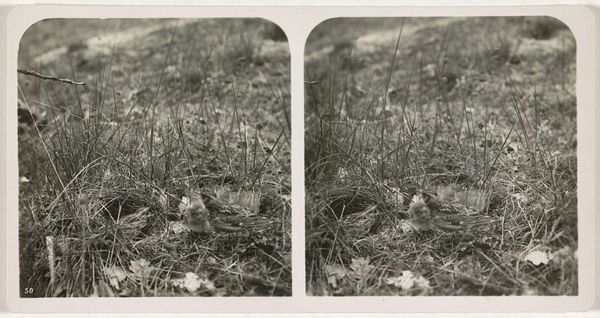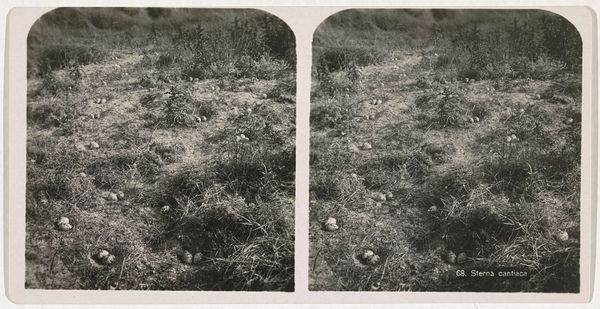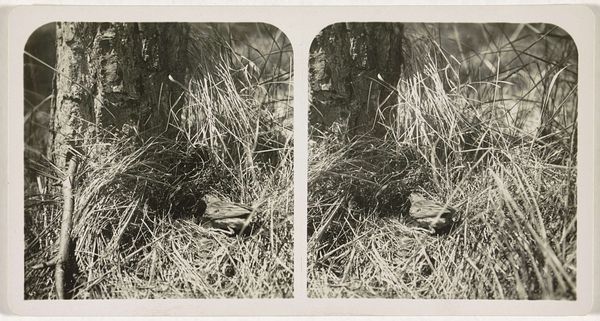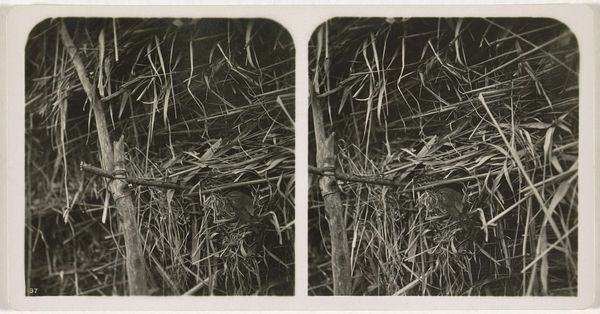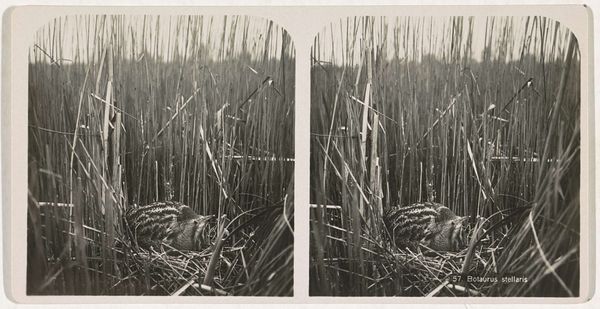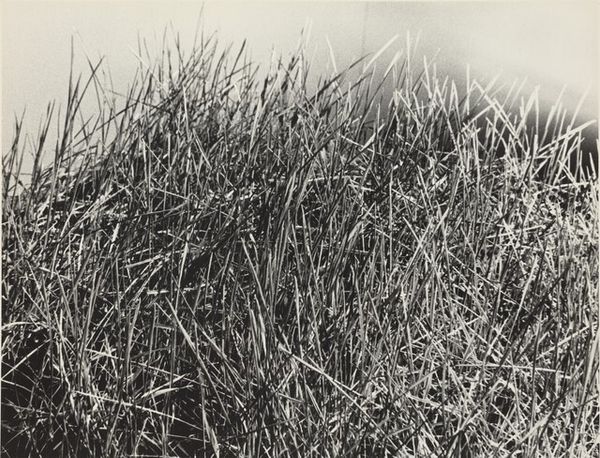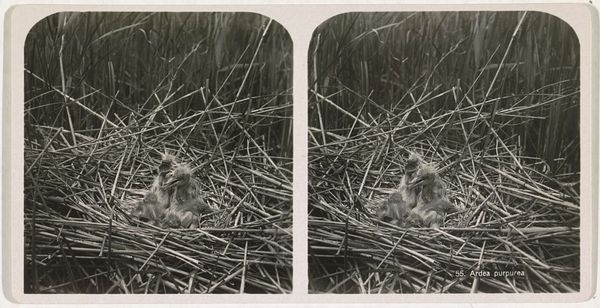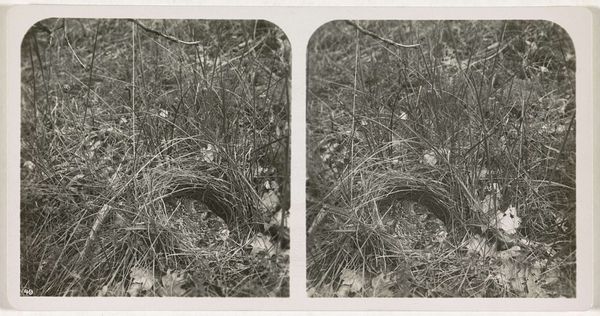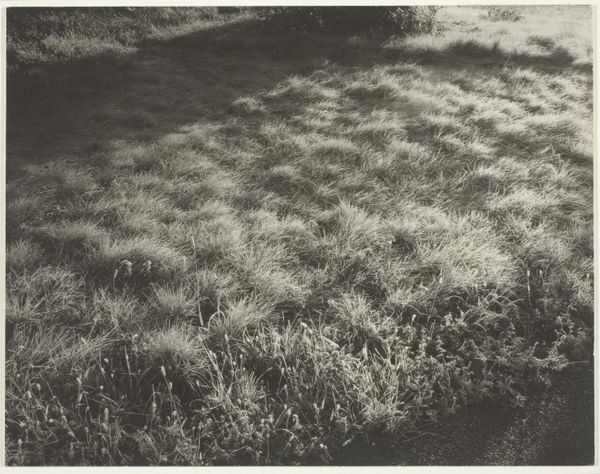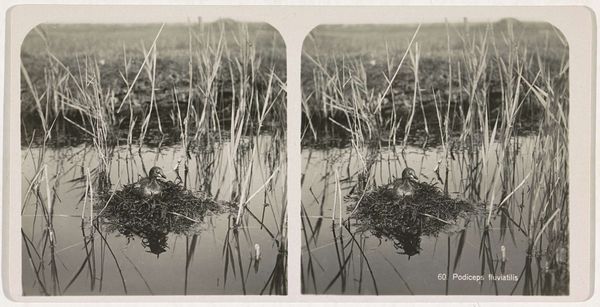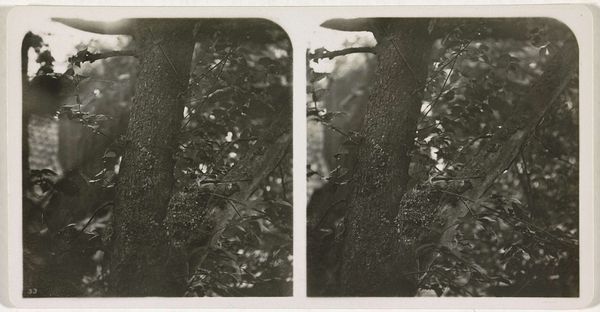
photography
#
still-life-photography
#
organic
#
ink painting
#
organic shape
#
landscape
#
photography
Dimensions: height 86 mm, width 164 mm
Copyright: Rijks Museum: Open Domain
Curator: Look at this stereoscopic image by Adolphe Burdet, “Boomleeuwerik voert jongen in nest”, or “Tree Pipit Feeding Young in Nest," dating circa 1870-1940. It’s currently held here at the Rijksmuseum. Editor: Immediately, I’m struck by the almost palpable sense of quietude, yet there’s clearly active nurture and vulnerability captured in those high grasses. A world teeming, but mostly hidden. Curator: Yes, there’s a complexity that speaks to both the intimate lives of the pipit family and the social conditions of photography in the late 19th and early 20th centuries. Think of the labour involved in producing these images, from the chemical processes to the distribution methods—mass consumption of private worlds, so to speak. Editor: The stereoscopic effect certainly adds depth. You feel drawn into the reeds, like an initiated observer permitted into a secret scene of family symbology. The parent bird almost becomes an emblem of protective love, hovering over the next generation. There is definitely a deeper archetypal mother figure emerging within the domestic. Curator: The chosen photographic processes were intensive as it demanded both expertise and expensive apparatus. Each individual element plays an active role in establishing this. This speaks to a specific, material access to both nature and its representations. Editor: In terms of imagery, consider how the nest becomes almost a sacred space, imbued with natural providence. The parent pipit morphs into a caring guardian, fulfilling ancient instincts—perhaps echoing universal themes found throughout mythology. Feeding, sustenance, shelter all wrapped together. Curator: I see that, yes. It brings the photographic processes and their material restraints directly into our modern relationship with landscape photography. Burdet captured the private lives of birds for an audience eager for glimpses into what lay outside everyday experience. Editor: It does provoke pondering on how images hold these layers of shared humanity and enduring animal nurture, right? And also on how those photographic rituals reinforce that sentiment through visual memory. Curator: Exactly. A single object, loaded with material history. Editor: Quite powerful once you think about that nesting image and those symbols and histories we still engage with today.
Comments
No comments
Be the first to comment and join the conversation on the ultimate creative platform.
